There are few plants in the world that are particularly resistant to harsh weather conditions, there are fewer that are sought after for features other than their flowers. However, there are a few plant species that can count themselves among these precious examples, and one of those is the Types of hostas family.
These plants originally come from East Asia, mostly from Japan but with some species originating in China, but have taken to cultivation in other areas incredibly well.
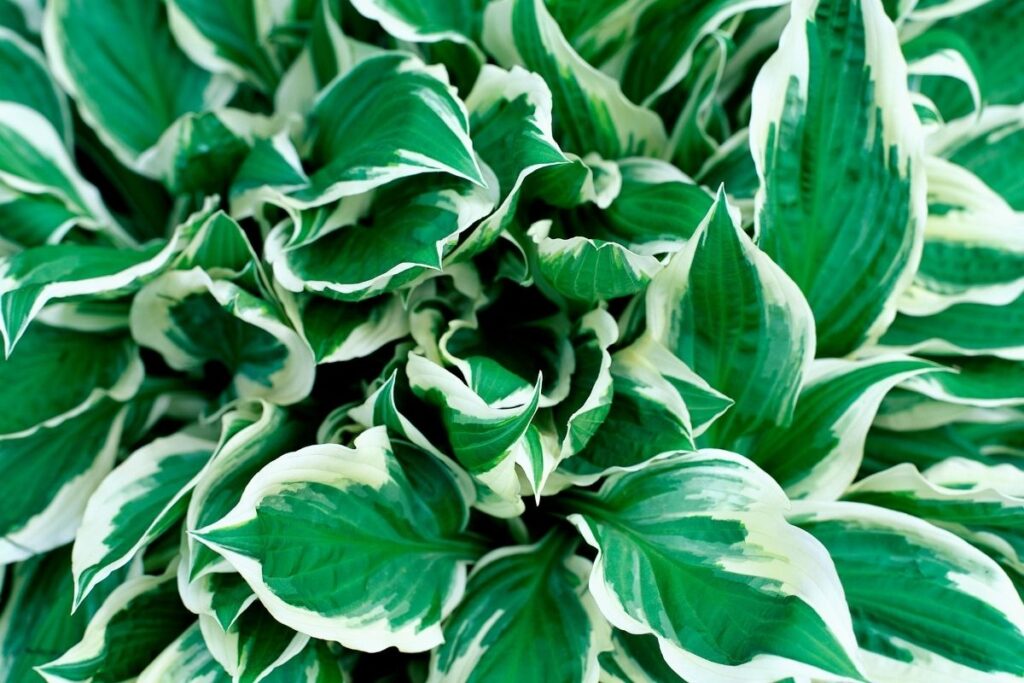
Originally, they were brought over to Europe by Philipp Siebold, but since then many horticultural groups have searched and bought them to fill their gardens.
Compared with other plants, they are low maintenance, resilient, and have absolutely beautiful leaves that drape down over the entire plant.
While they are known to grow slowly, this is only a mild inconvenience for brightening up your garden.
With so much going for these plants, it’s no wonder that people are searching them out, and it is the perfect time to look for some yourself.
With that in mind, we decided to create a list of the different types of hosta plants to help you build your ever-growing garden.
The Different Types of Hosta
Hostas are not a big plant family, with only about 45 different species in the genus, but that doesn’t make it easy or nice to choose between them. Part of the reason is that hostas are very different from one another in both looks and temperament.
Whereas some have small pretty flowers, others have large, gorgeous leaves.
This leaves gardeners in a bit of a predicament about what to select and what would look best in their garden, and be a hassle to any new gardener looking for a low maintenance plant to grow among many.
As such, we decided to go through the various types of hosta, focusing on the most popular and the most looked for by gardeners, so you don’t have to.
1. Whirlwind
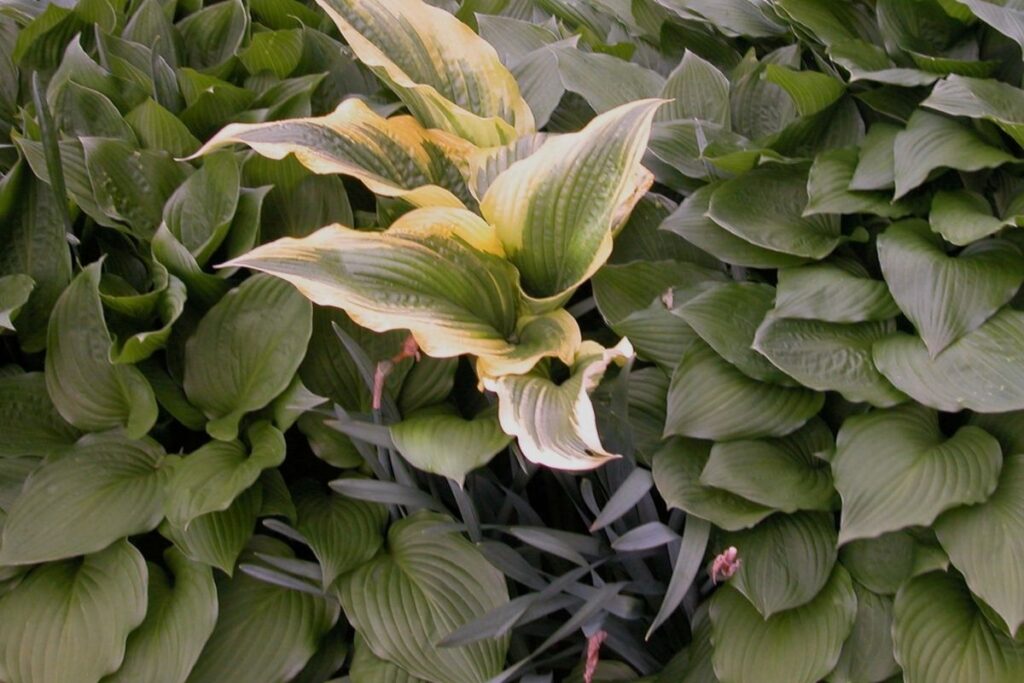
Probably the most popular of the hosta plants to add to your garden, the Whirlwind. It is so named because of the striking pattern that runs the length of the leaf, with the outer edges being a deep, dark green and the inner leaf being a cream white.
The white center does not blend at all with the green edges and is inconsistent and size. Since the leaves poke out of the plant haphazardly, this creates the image of a whirlwind in your garden.
The leaves are also quite rigid, waxy and pull slightly inwards on one side of the leaf, again adding to the image of a whirling wind.
These plants need to be grown in full or partial shade to survive and can grow up to 40 inches in height.
2. Halcyon
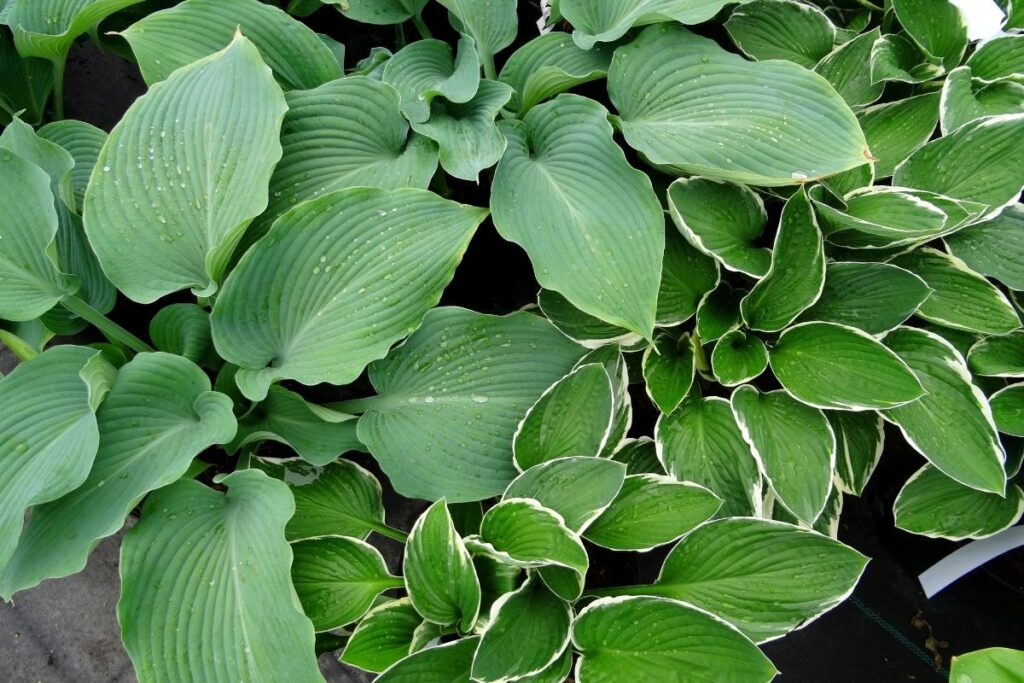
Another popular choice for gardeners, Halcyons are similar to Whirlwinds in appearance, but lack the swirling patterns. Instead, the leaves are more uniform and feature a deep green coloration.
They are also smaller than Whirlwinds and will reach heights of around 36 inches, making them great for small spaces.
While the leaves are larger than Whirlwinds, they do have an interesting feature: when they are wet, they curl up into a ball. When dry, they remain flat and upright.
This makes them excellent for hanging baskets and planters, as well as hanging pots.
3. Crispula

Similar to Halcyons, Crispulas are also smaller and feature a crisp, clean look. However, unlike Halcyons, the leaves are not curled when wet and instead stay erect.
These plants are extremely hardy, reaching heights of up to 48 inches and up to 84 inches wide.
The leaves are a reversal of the Whirlwind, in that the outer edges are a cream white and inner leaves are a pure green, however the pattern is not as inconsistent as the Whirlwind. This white margin with a green center is a perfect decoration to compliment other plants in your garden.
They are also easy to care for and can live in full sun or partial shade. If you want something that is compact and fast-growing, this is a good option for you.
4. Komodo Dragon
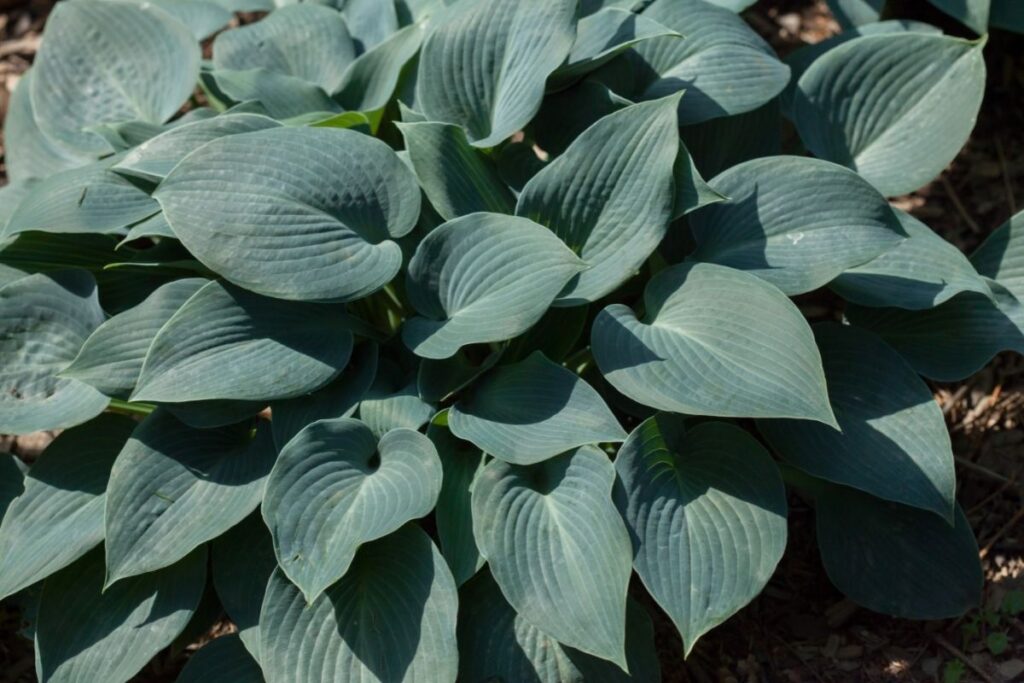
Also known as the Komodos, these are probably the largest type of hosta available. With a height of over 60 inches tall and width of over 84 inches, they are a sight to behold!
While they are much taller than other varieties, they still fit easily into small gardens.
Their leaves are also quite striking, featuring bright red stems and long, wide, pointed leaves that curve upwards at the tips and are a bright green in color. Like other varieties, they are very hardy but can thrive in full sun as well as part shade.
Since they require a lot of space, they are perfect for those who want something spectacular in their garden.
5. Fire Island
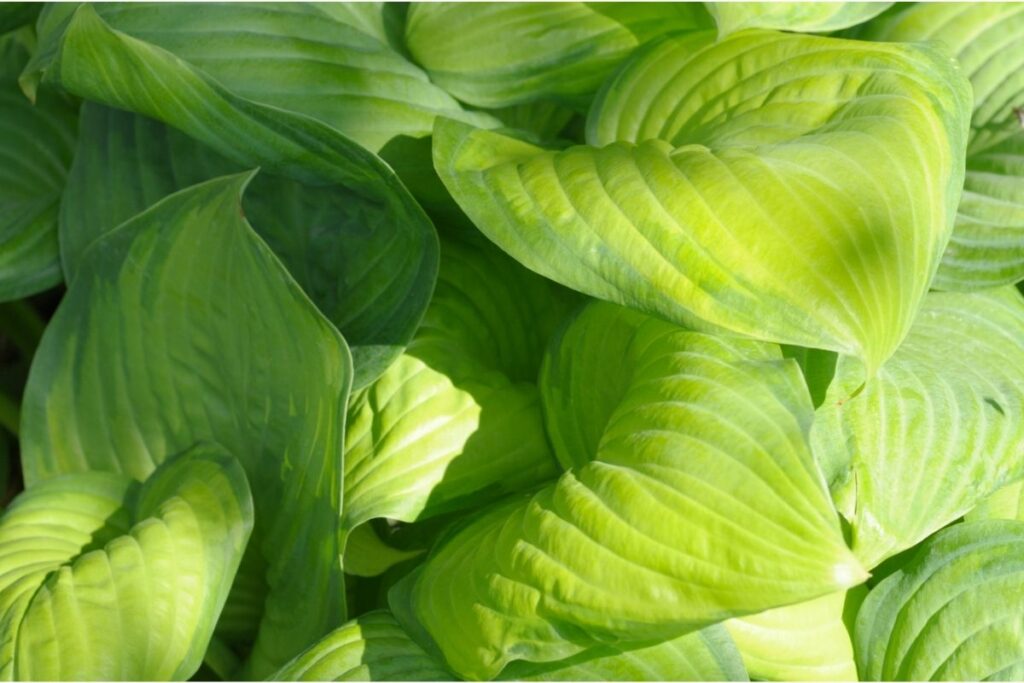
This variety has been gaining popularity recently, due to its unique foliage. Its leaves are shaped like flames and have a beautiful, light green hue.
Unlike many other types of hostas, it does not grow upwards, but rather sinks roots down into the soil. Because of this, Fire Islands only need to be planted once every 3 years.
The leaves themselves are fairly large and feature a broad base. They are also quite rigid and waxy and will hold their form even if left outdoors during winter months. As such, they make a great addition to any container.
If you enjoy unusual looking plants, then this might just be what you’ve been searching for.
6. Golden Tiara
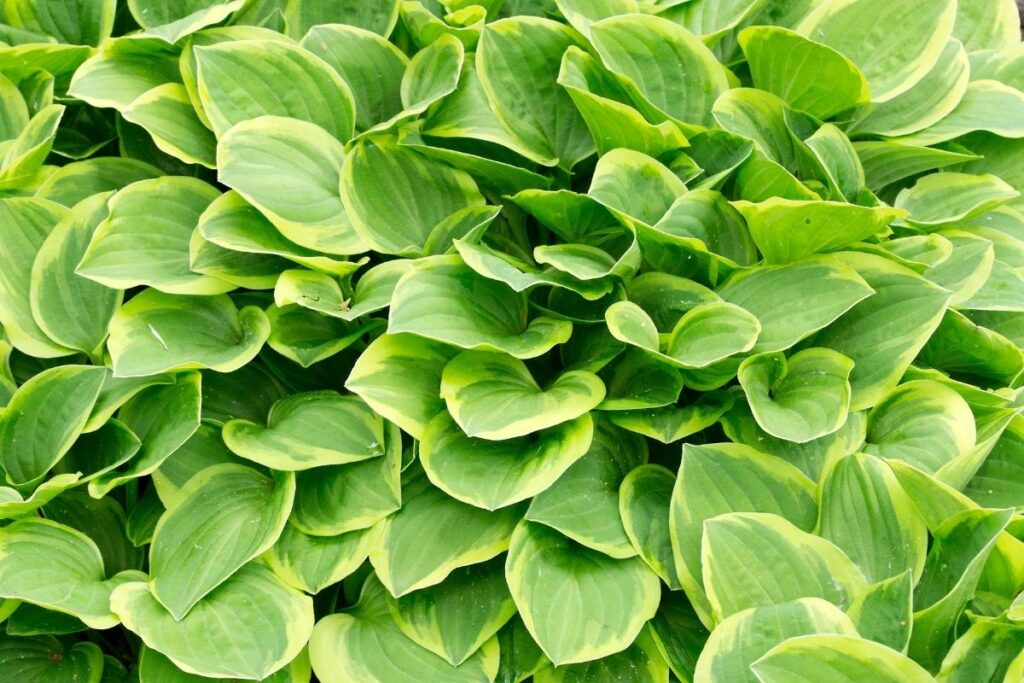
One of the most stunning varieties around, Golden Tiaras are often referred to as “the queen” of all hostas. Their leaves are a brilliant golden yellow with a dark green center, giving them a very striking appearance and working in complete contrast to the more volatile Whirlwind.
As mentioned earlier, they are also relatively slow growing, reaching a maximum size of about 30 inches tall. They do however tolerate both full sun and partial shade and will grow in soils ranging from sandy to clay. Originally, they start small, but don’t worry, they can spread into a gigantic mound over time.
Because of this, they are perfect for almost any area of your yard.
7. Elegens
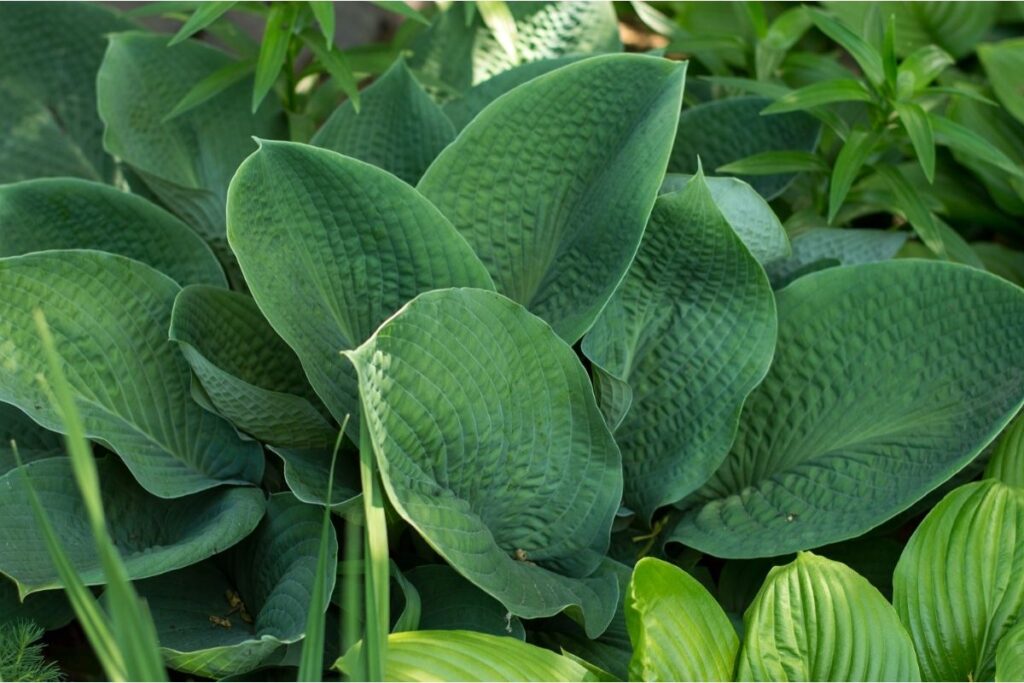
Similar to the Golden Tiara, Elegens are another gorgeous choice for your garden. The leaves are a forest green color that curve towards the center and form a slight cup.
They are also somewhat similar to the Golden Tiara in terms of growth rate; however, Elegens tend to reach a maximum size of around 24 inches tall.
What’s amazing about these hostas is that they have stunning flowers. These tiny flowers pop up in between the leaves and curl outwards from the bloom slightly whilst remaining closed.
They are also a breathtaking light pink color, accentuating the whole affair.
Like other varieties, they are tolerant of both full sun and partial shading, although they prefer full sun. Since they are so popular, you’ll find them everywhere, including nurseries, so it’s always worth checking out before purchasing.
8. Frances Williams
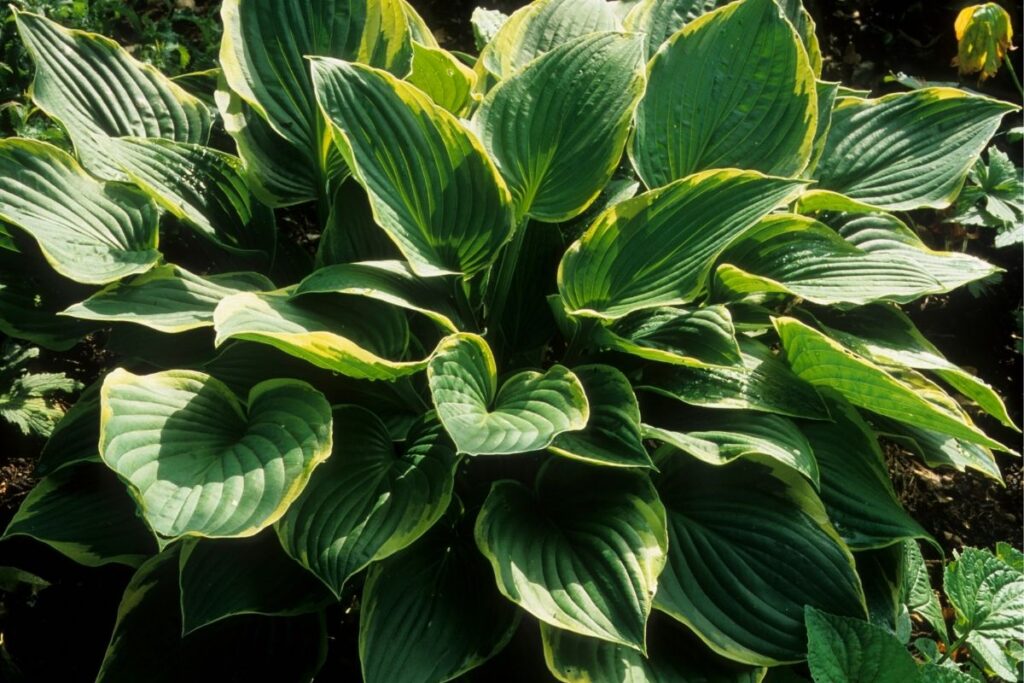
Another one of the newer varieties, Frances Williams, is a hybrid of the Golden Tiara and Whirlwind. It was created by combining the two varieties together to create a plant that has the best qualities of each. The result?
A plant that is extremely fast-growing, reaches heights of around 19 inches tall and 48 inches wide, features a beautiful golden yellow edge and a leaf green color in the center, and produces an abundance of blooms.
These flowers appear in clusters along the stem, which makes them easy to spot when planting. They are a lovely lilac color and give off a pleasant aroma, which can be unusual for hostas.
These plants can grow well in many conditioners, but thrive early on in big containers and can be transferred easily to the garden later.
If you’re interested in finding out more about this particular variety, check out our paragraph on the Golden Tiara.
9. August Moon

A little different from the rest, August Moon is a smaller variety that grows at only 25 inches tall and 36 inches wide. However, it doesn’t stop there.
This hosta is actually capable of producing some pretty impressive flower heads. In fact, its flowers are so huge that they look like miniature dandelions!
The blooms are a lavender color and peek out over the plants in the sunlight. They are also incredibly fragrant, making it easy to pick up the scent in the air. If you want to get the biggest bang for your buck, you might want to consider buying several of these.
This variety is also known as ‘Little Gem’ for its resemblance to the lettuce, and is available from a number of nurseries across the country.
Conclusion
Hostas are a wonderful plant and are incredibly well suited to almost any garden environment. While they do better in wetter climates, it is not hard to adjust them to a drier climate. These plants are easy to maintain and are beautiful to look at.
The fact that most of their beauty comes from the plants themselves rather than the flowers makes them all the better to place in your garden for a sense of contrast and diversity.







